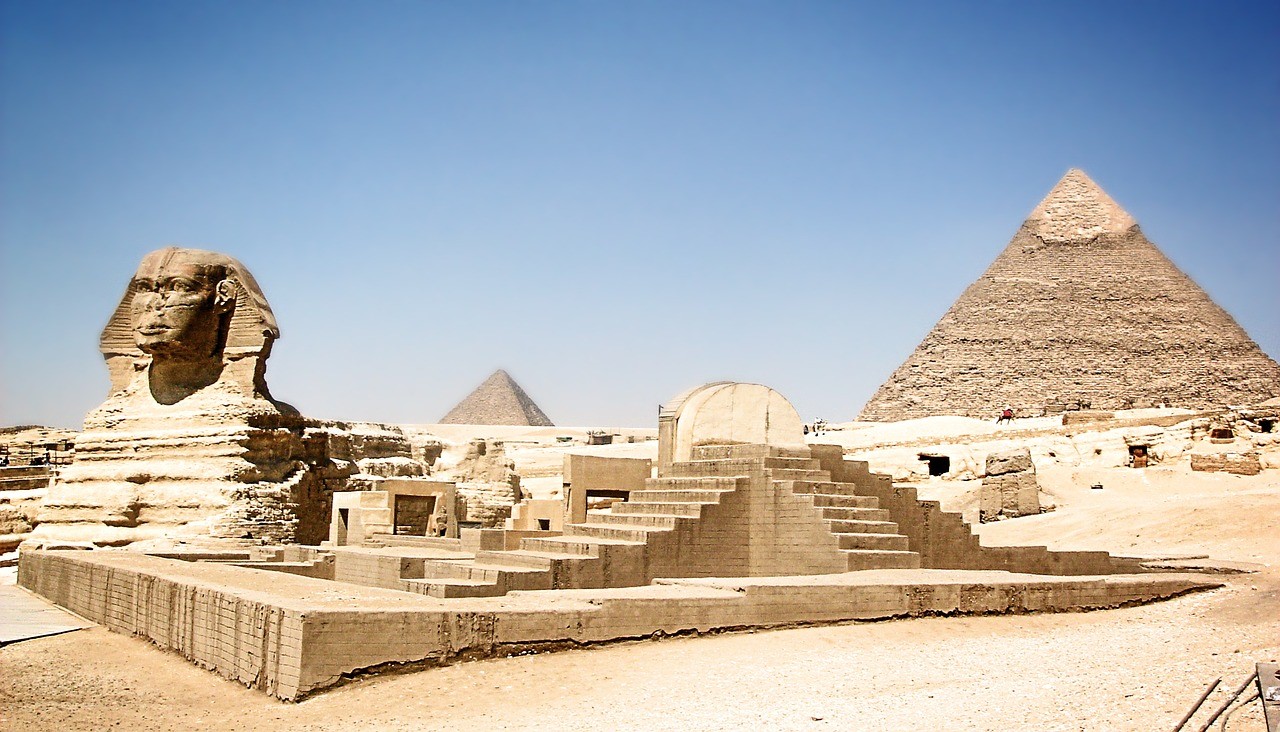
By Heather Hamilton, contributing writer
After announcing that they would use tomography to explore the Great Pyramid of Giza (also known as the Pyramid of Khufu), a team of researchers from the ScansPyramids project discovered an internal void inside the Great Pyramid. It’s 100 feet long and is the first new chamber discovered since the 19th century. Initially, the team planned to study construction techniques as well as image internal structures currently inaccessible to researchers.
Launched in 2015, the ScansPyramidsproject is an international mission under the authority of Egypt’s Ministry of Antiquities, who aims to get a noninvasive look into Egypt’s pyramids using technology.
The Great Pyramid was built on Egypt’s Giza Plateau by the pharaoh Khufu during the Fourth Dynasty and is one of the oldest and largest monuments on Earth. Still, there is no widely accepted consensus about how exactly it was constructed.
By using three muon detection technologies, researchers discovered the chamber, confirming the results via three independent analysis teams, reports Extreme Tech. While researchers discovered documents as recently as 2013 at the construction site, the chamber marks the first discovery of its kind.
According to National Geographic, muons shower Earth constantly, flung off when cosmic rays collide with the upper atmosphere of Earth. They can’t be seen with the naked eye, though scientists can spot them with films and detectors made to trace their 3D paths. Muons pass more easily through empty space than through materials that are more solid, which means that multiple muon detectors arranged around a structure allow scientists to map the solid and empty parts of a structure.
The muon tomography is unable to identify small air shafts, and the pyramid’s density required several months of observation in order to gather enough muons to scan the internal structure. By looking at the cross-section and length of the void, researchers established that it is a major structure within the pyramid, sharing similar muon data patterns to the Grand Gallery. They believe that this serves as evidence that the space was left deliberately void, though they aren’t sure what might be in the space, what purpose it served, and whether or not it is one of many. Because most pyramids are made up primarily of solid rock, the chamber is noteworthy.
Named the ScanPyramids Big Void, this particular chamber was first observed with nuclear emulsion films installed in the Queen’s chamber and then confirmed with scintillator hodoscopes set up in the same chamber and then reconfirmed with gas detectors outside of the pyramid, according to the article in Nature.
One of the hurdles in exploring pyramids is the vastly different ways of constructing them, depending on dynasty. Pyramids vary in both material and design, which makes exploration crucial. Currently, it is unclear whether or not researchers will be allowed to attempt to open the newly discovered void because Egypt maintains strict regulations on pyramid exploration following extensive looting in the 19th and 20th centuries.
Sources: ScansPyramids, Extreme Tech, National Geographic, Nature
Image Source: Pixabay
Advertisement
Learn more about Electronic Products Magazine





